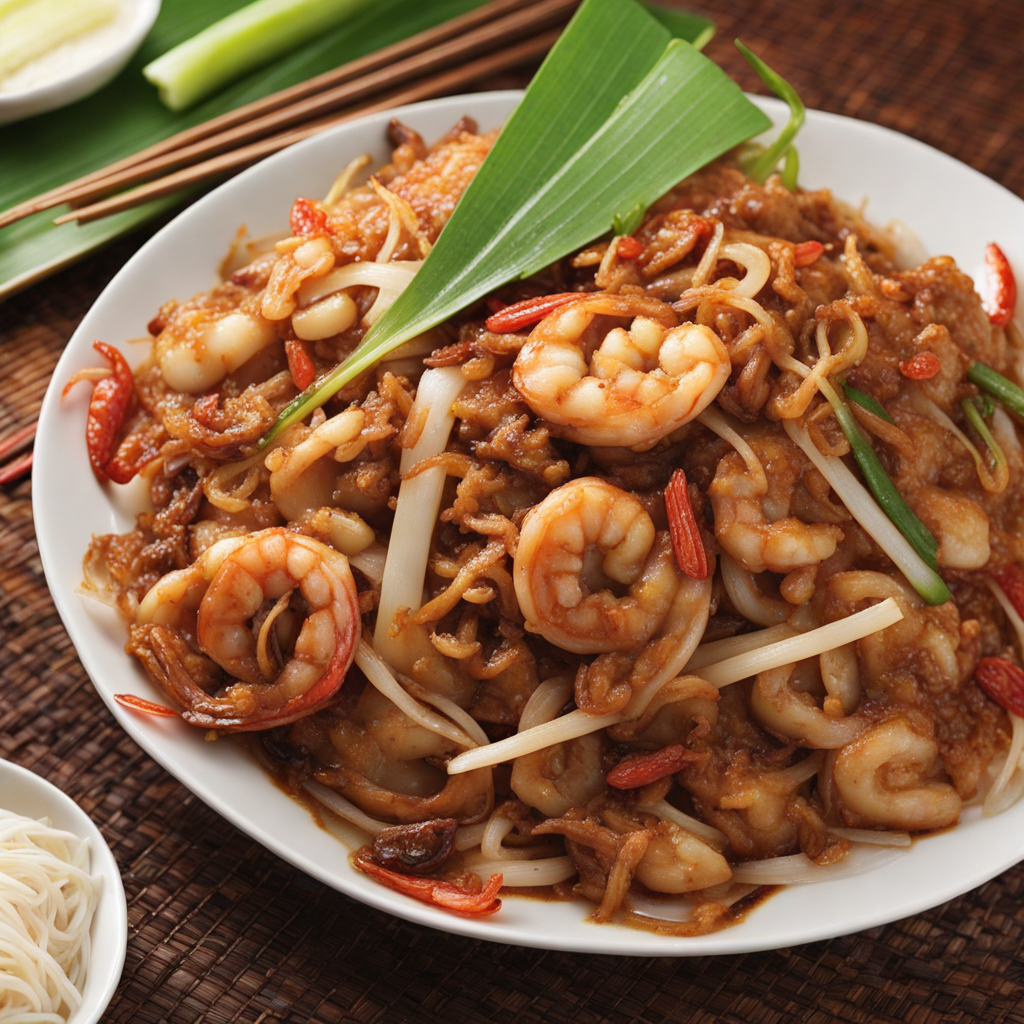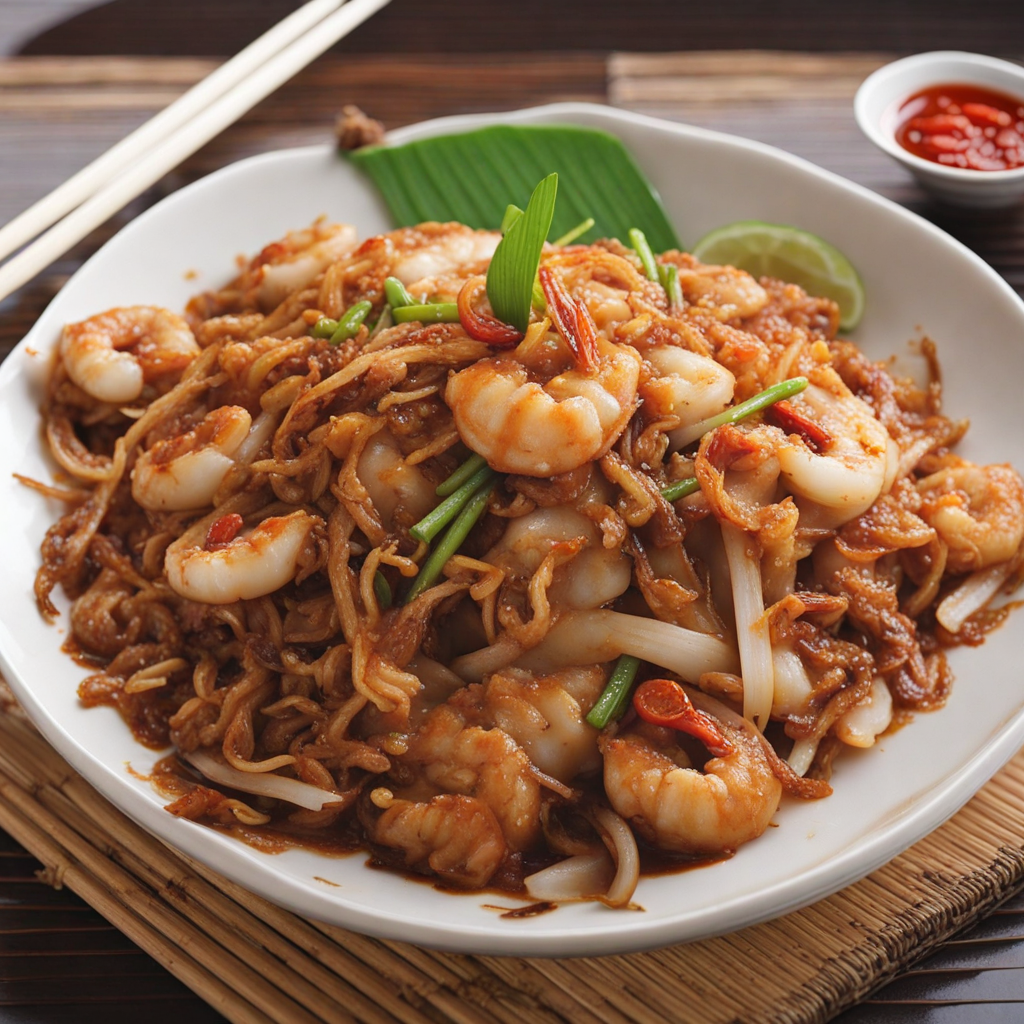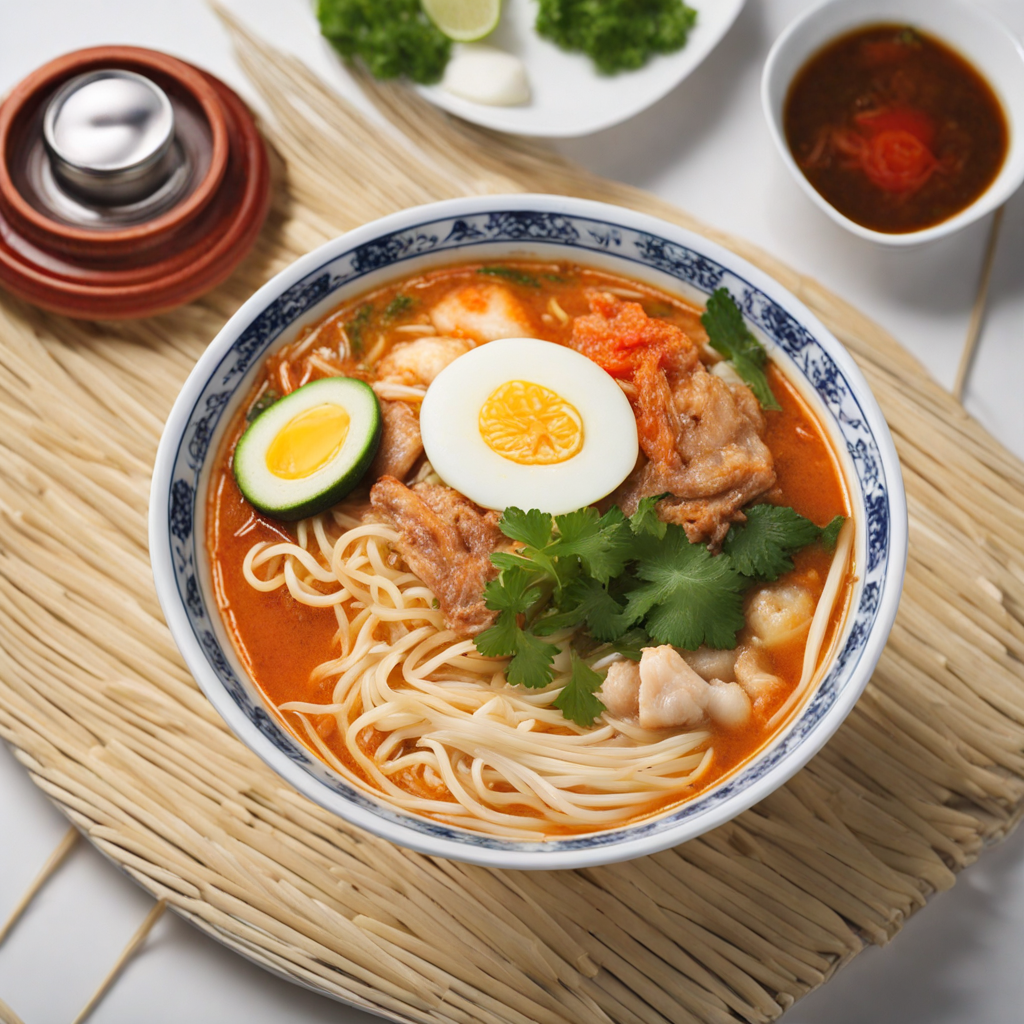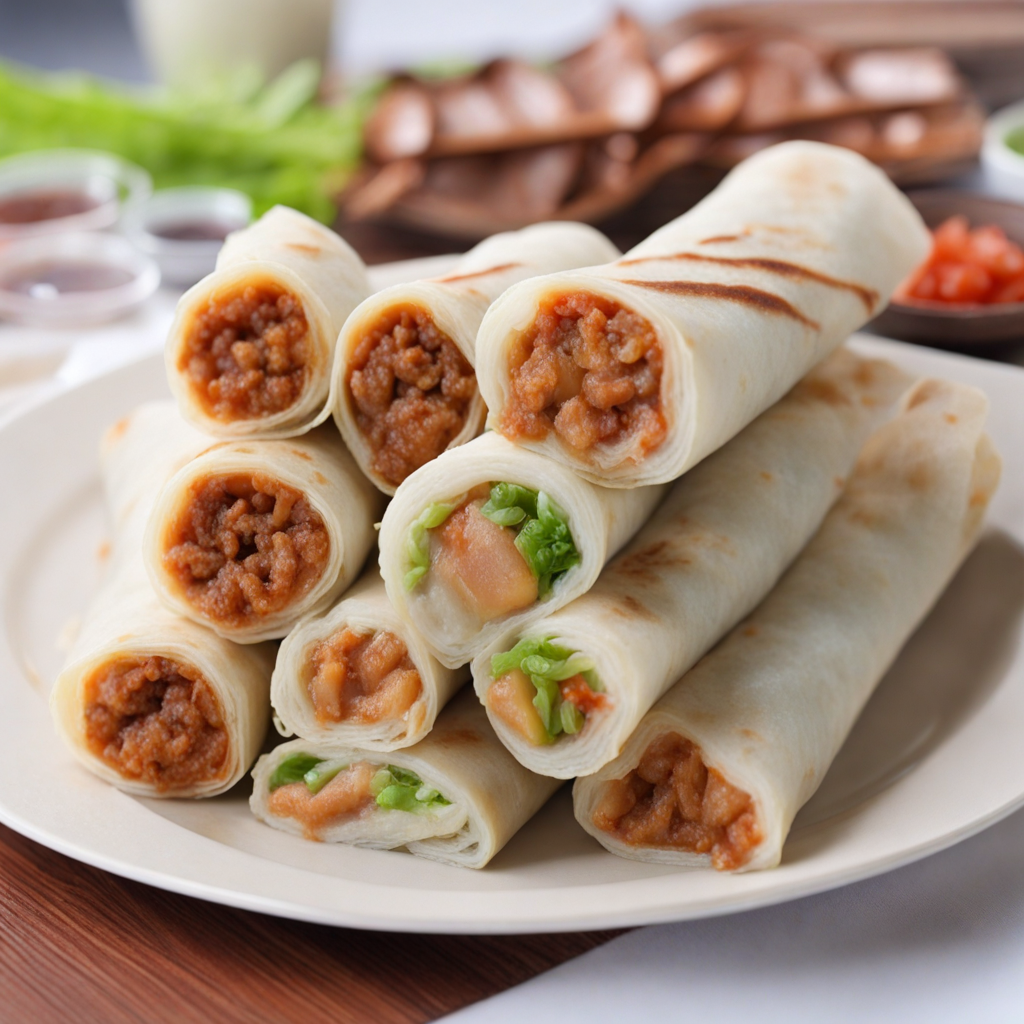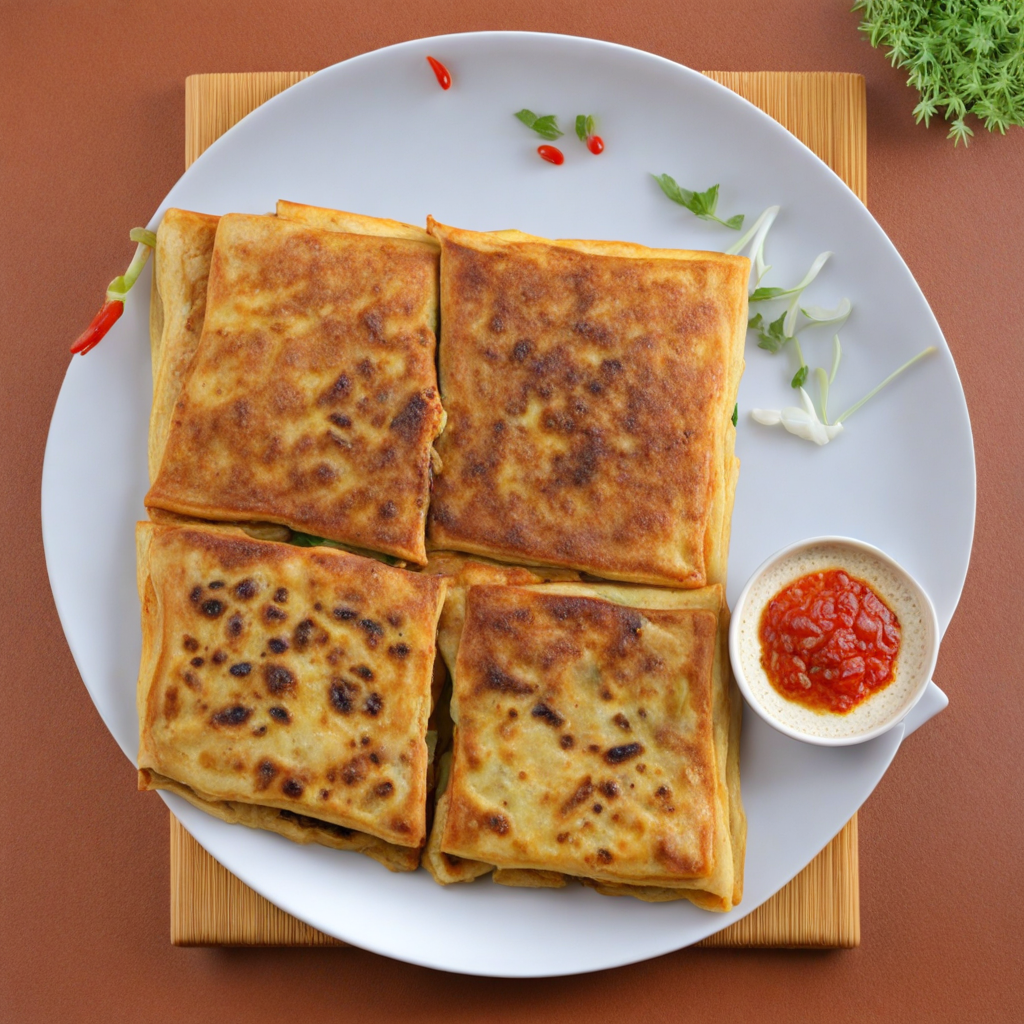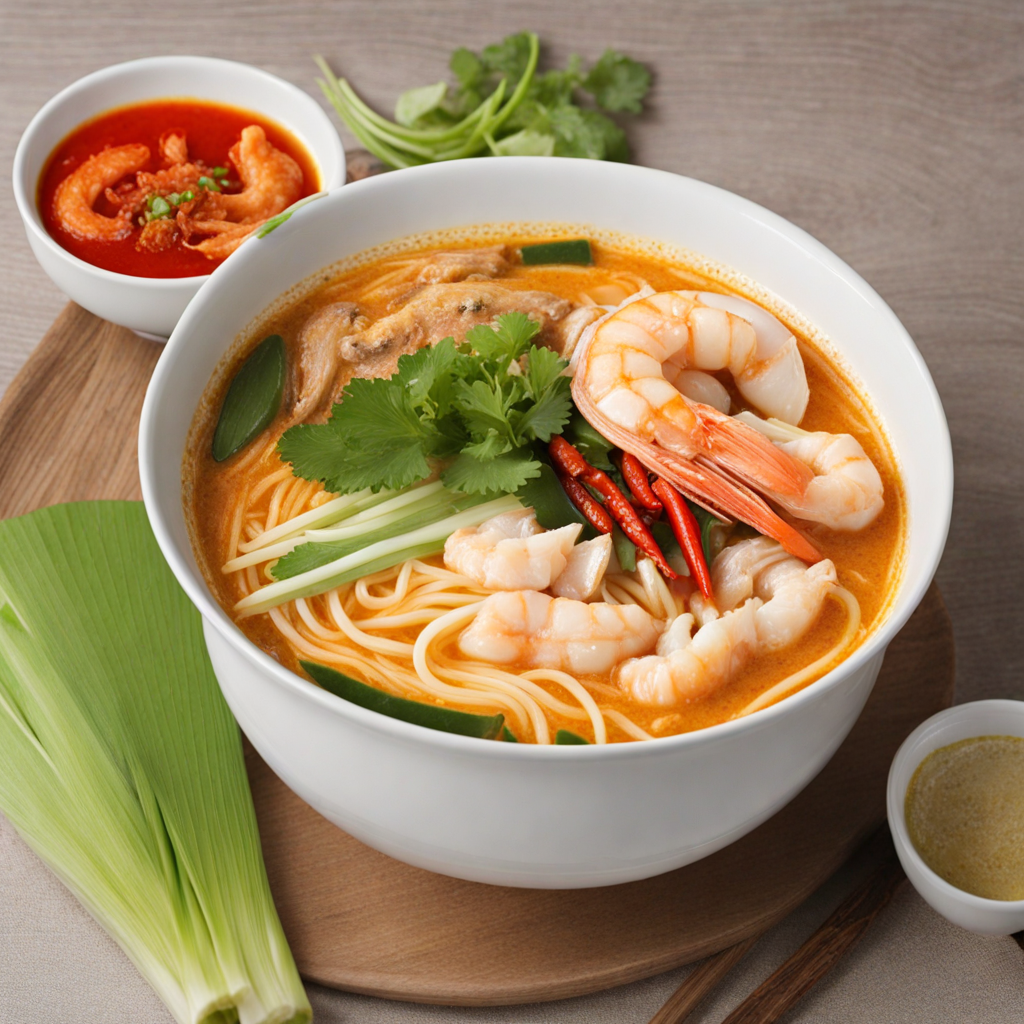Char Kway Teow
Char Kway Teow is a beloved Malaysian stir-fried noodle dish that boasts a perfect balance of flavors and textures. At its core, this dish features flat rice noodles, known as 'kway teow,' which are skillfully tossed in a hot wok with a combination of ingredients that create a symphony of taste. The noodles are typically stir-fried with a rich, savory soy sauce, giving them a glossy finish and an umami depth that is both satisfying and addictive. The high heat of the wok imparts a delightful smokiness, known as 'wok hei,' which elevates the dish to new heights, making each bite a tantalizing experience. The charm of Char Kway Teow lies not only in its noodles but also in its diverse assortment of ingredients. Common additions include plump prawns, succulent Chinese sausage, and tender bean sprouts, all of which contribute to the dish's vibrant character. Some variations might include cockles or eggs, adding a layer of richness and complexity. The dish is often garnished with fresh chives or chili paste, providing a fresh and spicy kick that perfectly contrasts the dish’s savory notes. This medley of ingredients creates a dish that is both hearty and satisfying, perfect for a quick meal or a leisurely dining experience. What sets Char Kway Teow apart from other noodle dishes is its unique blend of flavors that reflects the multicultural influences of Malaysia. Each bite offers a delightful combination of sweetness, saltiness, and spiciness, showcasing the rich culinary heritage of the region. Whether enjoyed from a bustling street vendor or a cozy restaurant, Char Kway Teow is an invitation to explore the vibrant tastes of Malaysian cuisine, making it a must-try for any food lover seeking to expand their palate.
How It Became This Dish
The History of 炒粿條: A Culinary Journey through Malaysia #### Origins of 炒粿條 炒粿條, pronounced as "chao kway teow," is a beloved Malaysian dish that reflects the rich tapestry of the country’s culinary heritage. This stir-fried rice noodle dish has its roots deeply embedded in the multicultural history of Malaysia, particularly influenced by the Chinese, especially the Teochew and Hokkien communities. The origins of kway teow itself can be traced back to the southern regions of China, particularly in the provinces of Guangdong and Fujian. The term "kway teow" translates to "stir-fried rice strips," which describes the flat rice noodles that are the heart of this dish. These noodles, made from rice flour and water, are traditionally white and have a chewy texture, making them perfect for stir-frying. During the 19th and early 20th centuries, waves of Chinese immigrants arrived in Malaya (now Malaysia) seeking better opportunities. Among them were the Teochew and Hokkien people, who brought with them their culinary traditions, including the preparation of stir-fried noodles. The adaptation of local ingredients and cooking methods eventually gave birth to what we now know as 炒粿條. #### Cultural Significance 炒粿條 is more than just a dish; it embodies the essence of Malaysian culture—a fusion of various ethnicities and flavors. The dish is a prime example of how Chinese culinary practices melded with local Malay and Indian influences over the years. This intercultural exchange is evident in the ingredients and cooking techniques employed in making 炒粿條. Culturally, 炒粿條 is significant in several ways. It is often served at hawker stalls, which are a hallmark of Malaysian street food culture. The hawker centers, where various vendors sell their specialties, are social hubs. Eating at these stalls is a communal experience that encourages sharing and interaction among friends and family, reinforcing community bonds. 炒粿條 is also a dish associated with celebration and gatherings. It is often served at family reunions, festivals, and birthdays, symbolizing abundance and unity. The dish’s popularity transcends social classes, enjoyed by both the wealthy and the working class. Its affordability and accessibility contribute to its status as a comfort food in Malaysia. #### Ingredients and Preparation The authentic version of 炒粿條 is characterized by its simplicity and bold flavors. The key ingredients include flat rice noodles, soy sauce, garlic, and a variety of proteins such as shrimp, cockles, Chinese sausage, and eggs. It is often garnished with bean sprouts, chives, and sometimes chili for an extra kick. The preparation is an art form in itself. Traditionally, 炒粿條 is cooked over high heat in a "wok," which imparts a distinctive smoky flavor known as "wok hei." The technique involves rapid stir-frying, allowing the noodles to absorb the flavors from the ingredients while retaining their chewy texture. As with many traditional dishes, variations of 炒粿條 have emerged, reflecting regional preferences and available ingredients. In Penang, for instance, the dish is often enhanced with the addition of prawns and the use of a special chili paste, making it spicier and more fragrant. In contrast, other regions may focus on different proteins or incorporate local spices to create unique interpretations. #### Development Over Time Over the decades, 炒粿條 has evolved, adapting to changing tastes and the influence of globalization. In the late 20th century, as Malaysia opened up to international tourism, the dish gained recognition beyond its local roots. Tourists flocked to Malaysia, eager to sample the vibrant street food scene, and 炒粿條 quickly became one of the must-try dishes. With the rise of food blogging and social media in the 21st century, 炒粿條 has enjoyed a resurgence in popularity. Food enthusiasts share their experiences and variations of the dish, contributing to its evolving identity. Modern interpretations have emerged, including vegetarian versions and those that cater to specific dietary needs, showcasing the dish's versatility. Moreover, the globalization of food has led to the fusion of 炒粿條 with other culinary traditions. Innovative chefs have experimented with different ingredients, incorporating elements from Western cuisine, which has resulted in dishes like "truffle kway teow," illustrating how traditional foods can adapt and thrive in contemporary settings. #### Conclusion 炒粿條 is a dish that encapsulates the rich, multicultural history of Malaysia. Its origins in Chinese culinary traditions, combined with the influences of local ingredients and cooking methods, have created a dish that is both deeply rooted and constantly evolving. The significance of 炒粿條 extends beyond its flavors; it represents community, celebration, and the sharing of cultures. As Malaysia continues to embrace its diverse heritage, 炒粿條 will undoubtedly remain a staple in the nation's culinary landscape. Whether enjoyed at a bustling hawker stall, at home with family, or as a modern fusion dish, 炒粿條 stands as a testament to the enduring power of food to connect people, celebrate traditions, and evolve over time.
You may like
Discover local flavors from Malaysia


